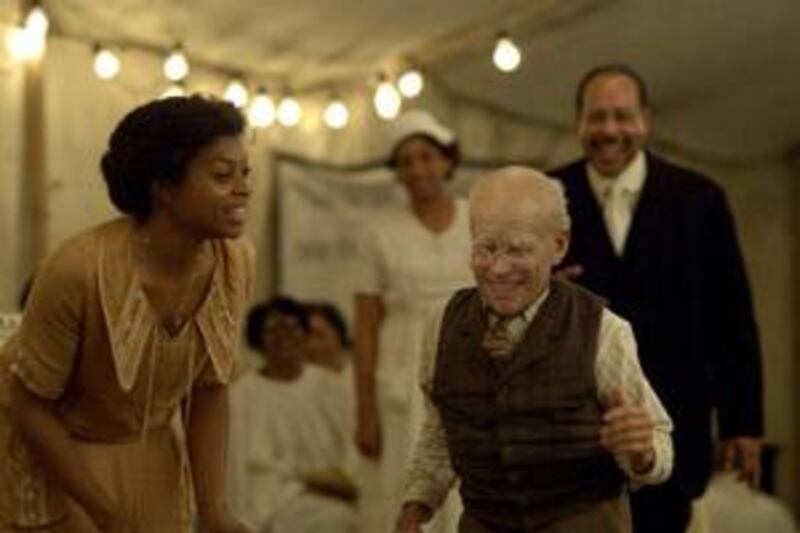"Did I ever tell you I been struck by lightning seven times?" the elderly Mr Daws asks Benjamin Button repeatedly through the film. Every time he mentions it, he details one of the incidents, which is accompanied by a rapid silent movie depicting the unfortunate strike. This is The Curious Case of Benjamin Button's funniest device, and it's also one of the most analogous to the film as a whole: it's repetitive, it's quirky, it's self-consciously picturesque and, as Mr Daws only tells us about three of his seven lightning strikes, it feels sadly incomplete.
Based on the short story by F Scott Fitzgerald, the plot is a sort of modern retelling of Shakespeare's famous Seven Ages of Man. A boy is born with the face and helplessness of an old man in 1919 - "he looks just like my ex-husband," exclaims one old lady - and gradually gets younger and younger. In between, he is abandoned by his father on the steps of an old people's home run by the kind, motherly Queenie (Taraji P Henson), who defies horrified onlookers and takes care of Benjamin; he falls in love with Daisy, he goes to sea, experiences the Second World War, marries and has a child. Finally, as a child himself, he loses his faculties again as he experiences "Second childishness and mere oblivion, Sans teeth, sans eyes, sans taste, sans everything", in the words of the bard. It's an ingenious plot device, and yet somehow in this incarnation lacks the necessary humanity to truly move the viewer.
Certainly, the film is fascinating to watch: the curious case of how to make Brad Pitt look ancient and wrinkled as Benjamin Button, the man who is born 86 years old and gets younger, is endlessly intriguing. An incredible amount of groundbreaking digital innovation was involved with a result that, unlike most CGI films, looked completely naturalistic. Yet watching the immensely beautiful graphic work here is a bit like watching Cate Blanchett (Daisy) act: it is an amazing feat of realism but impossible to truly engage in because you are so absorbed in marvelling over the technique of it that your disbelief is never fully suspended. As Pitt grows younger, it is impossible to resist searching out his facial features as we know them, and of course pondering how accurate these constructions will turn out to have been in 40 years' time.
It's not all about the CGI, either. The movie is visually epic, with exquisite lighting and camerawork, and some individual shots that are breathtaking. The scene in which Benjamin sits with his father staring out over a lake might easily have been conceived purely to allow this memorable tableau to take place. The settings for Button's adventures around the world are exquisitely detailed and convincing: gorgeously lit in that warm, golden, Hollywood way, without looking fake or contrived. From its many Oscar nominations, it is no surprise that the winning categories were for Best Achievement in Art Direction, in Make-Up and in Visual Effects.
As for the performances, Pitt's talent continues to develop in a way that no one could have expected from the young heartthrob that appeared on the scene 20 years ago, and he turns in an engaging and affecting performance - via the elderly face given to him by the special-effects artist Kazuhiro Tsuji. Some of the treacly lines he is handed ("Your life is defined by its opportunities... even the ones you miss"; "It's a funny thing about comin' home. Looks the same, smells the same, feels the same. You realise what's changed is you") are on a par with Forrest Gump's "Life is like a box of chocolates" speech for slushiness. It is to Pitt's considerable credit that his faintly sardonic delivery prevents the script (by Eric Roth, who also penned Forrest Gump) from seeming saccharine.





